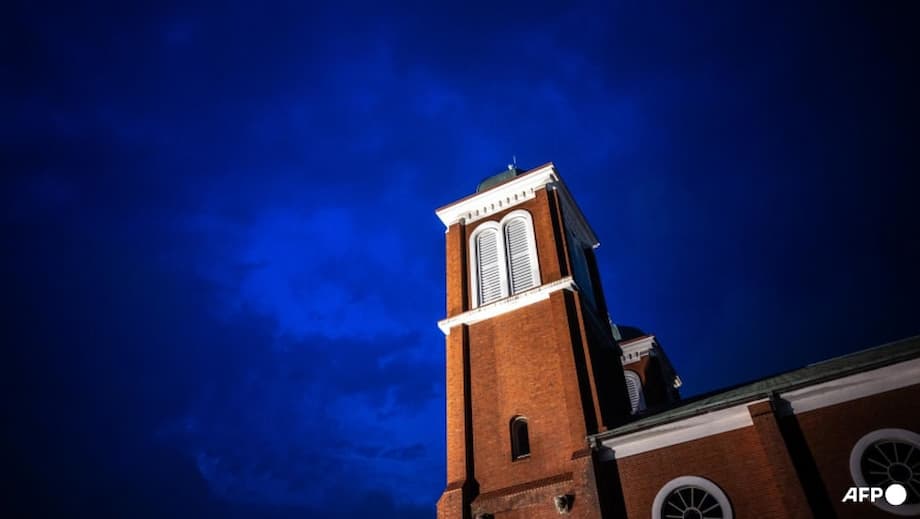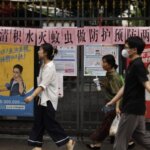Nagasaki’s Twin Cathedral Bells: A Resonant Symbol 80 Years After Atomic Devastation
On August 9, 2025, the city of Nagasaki marked a solemn milestone: 80 years since it was devastated by an atomic bomb. At precisely 11:02 am—the moment the bomb detonated in 1945—twin bells rang in unison at the Immaculate Conception Cathedral, also known as Urakami Cathedral. This was the first time since the bombing that both bells chimed together, a powerful gesture of remembrance, reconciliation, and hope for a world without nuclear weapons.
- Nagasaki’s Twin Cathedral Bells: A Resonant Symbol 80 Years After Atomic Devastation
- Remembering the Day: The Atomic Bombing of Nagasaki
- The Bells: Loss, Restoration, and a Message of Peace
- Commemoration and Calls for Peace: The 80th Anniversary Ceremony
- Survivors’ Voices: Bearing Witness and Passing the Torch
- The Catholic Church and Nagasaki: Faith, Suffering, and Reconciliation
- The Global Nuclear Dilemma: Treaty, Deterrence, and the Path Forward
- In Summary
The event drew thousands of participants, including survivors, dignitaries, religious leaders, and representatives from nearly 100 countries. The sound of the bells echoed not only through the rebuilt cathedral but also through the collective memory of a city—and a world—still grappling with the legacy of nuclear warfare.
Remembering the Day: The Atomic Bombing of Nagasaki
On August 9, 1945, just three days after the atomic bombing of Hiroshima, the United States dropped a second atomic bomb—nicknamed “Fat Man”—on Nagasaki. The bomb exploded at 11:02 am, unleashing a fireball and shockwave that obliterated much of the city. Approximately 74,000 people were killed by the end of that year, with tens of thousands more suffering from injuries and radiation-related illnesses in the decades that followed. The attack hastened Japan’s surrender on August 15, 1945, bringing World War II to a close but leaving a profound scar on the nation and the world.
The bomb detonated just 500 meters from Urakami Cathedral, the largest Catholic church in East Asia at the time. The explosion destroyed the cathedral and killed thousands of parishioners—Nagasaki’s Christian community, which had survived centuries of persecution, lost 8,500 of its 12,000 members in an instant.
Survivors, known as hibakusha, have endured not only physical and psychological trauma but also social stigma. Their testimonies have become a vital part of Japan’s—and humanity’s—collective memory, fueling ongoing calls for nuclear disarmament.
The Bells: Loss, Restoration, and a Message of Peace
Before the bombing, Urakami Cathedral’s twin bell towers housed two bells. The larger bell was recovered from the rubble and eventually rehung in the south tower. The smaller bell, however, was too badly damaged and was placed in the cathedral’s Atomic Bomb Relics Exhibition Room as a silent witness to the tragedy.
For decades, only one bell rang out over Nagasaki. But in 2024, a remarkable international effort led to the creation and installation of a new bell in the north tower. The project was spearheaded by James Nolan, a sociology professor from Williams College in Massachusetts, whose grandfather had worked on the Manhattan Project—the secret U.S. program that developed the atomic bomb.
Inspired by a Japanese Christian’s wish to hear both bells ring together again, Nolan embarked on a yearlong fundraising campaign across American churches, raising approximately $125,000. The new bell arrived in Nagasaki in May 2025, was blessed by Archbishop Peter Michiaki Nakamura in July, and was installed in time for the 80th anniversary.
At the commemorative ceremony, the bells rang together at 11:02 am, their sound described by witnesses as both mournful and hopeful. Chief priest Kenichi Yamamura reflected on the symbolism:
“It’s not about forgetting the wounds of the past but recognizing them and taking action to repair and rebuild, and in doing so, working together for peace.”
The restoration of the bells, funded largely by American Catholics, became a gesture of reconciliation between former adversaries and a testament to the enduring human capacity for compassion and healing.
Commemoration and Calls for Peace: The 80th Anniversary Ceremony
The 80th anniversary commemoration was marked by a series of solemn rituals and international participation. About 2,600 people gathered at Nagasaki Peace Park and nearby Hypocenter Park, the latter located directly beneath the bomb’s detonation point. The ceremony began with a moment of silence, followed by the ringing of the cathedral bells and the release of doves—symbols of peace.
Nagasaki Mayor Shiro Suzuki delivered a powerful Peace Declaration, warning of the persistent threat of nuclear war amid ongoing global conflicts. He called for an immediate end to armed confrontations and urged the world to remember the lessons of Nagasaki:
“If we continue on this trajectory, we will end up thrusting ourselves into a nuclear war. Immediately cease from disputes in which force is met with force.”
Prime Minister Shigeru Ishiba echoed these sentiments, pledging Japan’s commitment to a nuclear-free world, though he stopped short of endorsing the Treaty on the Prohibition of Nuclear Weapons, which Japan has not signed due to its security alliance with the United States.
Water offerings were made in a moving gesture of remembrance—recalling how, in the aftermath of the bombing, victims with burning skin begged for water. Survivors and younger generations participated together, underscoring the importance of passing down these memories.
International and Interfaith Presence
This year’s ceremony saw the participation of nearly 100 countries. Notably, Israel was invited after being excluded the previous year due to security concerns, while Russia and Belarus were not invited because of Russia’s invasion of Ukraine. The event also featured a significant Catholic presence, with four American archbishops joining a “Pilgrimage of Peace” aligned with the Church’s Jubilee of Hope. Interfaith services and a torch procession from the cathedral to Hypocenter Park symbolically linked Nagasaki’s spiritual rebuilding to its ground zero.
Survivors’ Voices: Bearing Witness and Passing the Torch
Survivors of the atomic bombing, now elderly, remain at the heart of Nagasaki’s peace movement. Their numbers are dwindling—fewer than 100,000 remain, with an average age over 86—but their determination to ensure Nagasaki is the last city ever attacked with nuclear weapons is undiminished.
Hiroshi Nishioka, 93, who was just three kilometers from the blast, spoke at the ceremony:
“Even the lucky ones who were not severely injured gradually began to bleed from their gums and lose their hair, and one after another they died. Even though the war was over, the atomic bomb brought invisible terror.”
Many survivors have faced discrimination and health problems, but they have consistently advocated for nuclear disarmament. Organizations supporting survivors are now working to record and digitize their stories, making them accessible to younger generations through platforms like YouTube and social media.
Teruko Yokoyama, an 83-year-old supporter, emphasized the urgency of this work:
“We must keep records of the atomic bombing damages of the survivors and their lifetime story.”
As the survivors age, they are entrusting their hopes for peace to the youth, encouraging them to learn from the past and continue the fight for a nuclear-free future.
The Catholic Church and Nagasaki: Faith, Suffering, and Reconciliation
Nagasaki’s Catholic community has a unique and poignant history. Christianity was introduced to Japan in the 16th century, but believers faced centuries of persecution, often practicing their faith in secret. By the 20th century, Nagasaki had become the heart of Japanese Catholicism.
The atomic bombing decimated this community, but survivors rebuilt Urakami Cathedral on its original site, completing reconstruction in 1959. The cathedral now stands as a symbol of resilience and reconciliation. The 80th anniversary saw a 24-hour prayer vigil and perpetual adoration at the cathedral, as well as an interfaith memorial service at Hypocenter Park.
American Catholic leaders, including Cardinals Blase Cupich and Robert McElroy, joined Japanese bishops in calling for nuclear disarmament. Cardinal Cupich described the bombings as “deeply flawed” for abandoning the just-war principle of noncombatant immunity, while Cardinal McElroy reiterated Pope Francis’s categorical rejection of atomic weapons.
Academic and religious institutions from Japan and the United States collaborated on a symposium examining Catholic ethics and nuclear policy, coordinated through the Partnership for a World Without Nuclear Weapons. These efforts highlight the role of faith communities in promoting peace and ethical reflection on the use of force.
The Global Nuclear Dilemma: Treaty, Deterrence, and the Path Forward
The anniversary comes at a time of renewed global anxiety over nuclear weapons. The Treaty on the Prohibition of Nuclear Weapons, which entered into force in 2021, has been ratified by more than 70 countries, but none of the world’s nuclear powers—including the United States, Russia, China, or Japan—have signed it. These nations argue that nuclear deterrence is necessary for security, a position increasingly challenged by survivors and peace advocates.
Japan’s refusal to sign the treaty, citing its reliance on the U.S. nuclear umbrella, has drawn criticism from survivors and activists. Mayor Suzuki and other leaders continue to press for global disarmament, warning that the existential threat posed by nuclear weapons is as urgent as ever.
Despite the challenges, the commemoration in Nagasaki serves as a rallying point for international cooperation and a reminder of the catastrophic consequences of nuclear war. The city’s message is clear: Nagasaki must remain the last place on earth ever to experience atomic devastation.
In Summary
- On August 9, 2025, Nagasaki’s twin cathedral bells rang together for the first time since the 1945 atomic bombing, marking the 80th anniversary of the attack.
- The bells’ restoration, funded by American Catholics and led by James Nolan, symbolizes reconciliation and hope for peace.
- The atomic bombing killed approximately 74,000 people and devastated Nagasaki’s Christian community, which had survived centuries of persecution.
- Survivors, or hibakusha, continue to bear witness to the horrors of nuclear war and advocate for disarmament, even as their numbers dwindle.
- The 80th anniversary ceremony included international participation, interfaith services, and calls from leaders for an end to armed conflict and nuclear weapons.
- The Catholic Church played a prominent role in the commemoration, emphasizing the moral imperative to abolish nuclear arms.
- Nagasaki’s message to the world: Remember the past, work for peace, and ensure that no city ever again suffers the fate of Hiroshima and Nagasaki.












